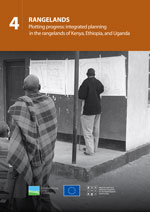Resource information
Ill advised, uncoordinated, and badly planned interventions have been blamed for continuing poverty and food insecurity in rangelands. Water interventions in particular have had negative impacts. Not only have these interventions failed to improve the livelihoods of people living there, but in many cases they have served to undermine them and the environment on which they depend. Rangeland development interventions have been sectoral in their approach. Development planners have been locked into manipulating one or two key components of rangelands, such as water, without properly taking into account the interconnections between water and grasslands, as well as the wider context in which communities live. Planning for development in rangelands, including land use planning, holds particular challenges and can impose unusual constraints on routine activities. Rangeland planners must address a number of challenges: the sheer size of administrative units with sparsely distributed populations and variable, patchy resources; the independent nature of pastoral and huntergatherer cultures; high levels of environmental variability; and the complexities of managing semi-natural ecosystems. Planners must also confront the additional challenge of managing the interface between high- and low-potential areas that are functionally interdependent. On a temporal basis too, the seasonal and flexible dynamics of pastoral systems rarely fit with the more constrained and rigid administrative, government yearly cycles of planning or finances. Group rights (ownership, access, and use) of resources provide particular challenges for land use planners. Further, there have been significant changes in society that have redefined the way in which individuals interact with each other and with communities, with significant implications for the place of traditional norms and institutions in controlling access to and use of natural resources. In response to these issues and challenges, this paper draws together and reviews current and recent experience in planning processes in the rangelands of Ethiopia, Kenya, and Uganda. Key lessons are drawn out from two types of intervention – those led by government and those led by NGOs. These form the basis of a set of recommendations for different actors.



